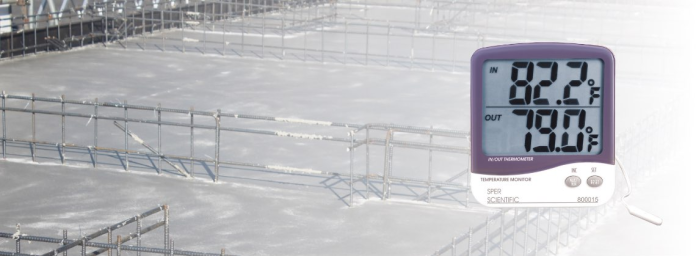Concrete is a widely used construction material due to its durability, strength, and versatility. However, like any material, concrete is subject to wear and tear over time, which can lead to structural instability and pose a risk to public safety. That is why it is important to test concrete regularly to ensure that it is strong and safe. Concrete laboratory and field testing are two methods of testing concrete that is commonly used in the construction industry. In this article, we will discuss the differences between concrete laboratory and field testing and their importance in the construction industry.
Concrete Laboratory Testing
Concrete laboratory testing involves performing various tests on concrete samples in a controlled laboratory environment. The tests are designed to evaluate the properties of the concrete, including its strength, durability, workability, and other important characteristics. The following are some of the common tests performed in a concrete laboratory:
Compressive Strength Test
The compressive strength test is one of the most commonly performed tests in a concrete laboratory. It involves applying a compressive force to a concrete cylinder until it fails. The results of this test can help engineers determine the strength of the concrete and whether it meets the requirements of the project.
Split Tensile Strength Test
The split tensile strength test is another commonly performed test in a concrete laboratory. It involves applying a tensile force to a concrete cylinder until it fails. The results of this test can help engineers determine the tensile strength of the concrete and whether it is suitable for use in certain applications.
Flexural Strength Test
The flexural strength test is used to determine the modulus of rupture of concrete. The test involves applying a load to a beam of concrete until it fails. The results of this test can help engineers determine the strength of the concrete in bending and whether it is suitable for use in structures that will be subjected to bending forces.
Procedure for Laboratory Testing
The procedure for laboratory testing involves taking samples of concrete and bringing them to the laboratory for testing. The samples are typically taken from the concrete as it is being poured, and they are placed in molds that are designed to produce a cylindrical or rectangular shape. The samples are then cured under controlled conditions for a specified period of time before being tested.
Importance of Laboratory Testing in Concrete Construction
Laboratory testing is important in concrete construction because it provides engineers with valuable information about the properties of the concrete. This information can be used to ensure that the concrete is suitable for the intended application and that it will perform as expected over time. For example, if the compressive strength of the concrete is too low, it may not be able to support the weight of the structure, which could result in catastrophic failure.
Concrete Field Testing
Concrete field testing involves performing various tests on concrete at the construction site. The tests are designed to evaluate the properties of the concrete, including its strength, durability, workability, and other important characteristics. The following are some of the common tests performed in a concrete field:
Slump Test
The slump test is used to measure the workability of fresh concrete. It involves measuring the slump, or deformation, of a cone-shaped sample of concrete as it is allowed to spread out under its own weight. The results of this test can help engineers determine whether the concrete is suitable for use in the project.
Air Content Test
The air content test is used to determine the amount of air in fresh concrete. The test is important because air can affect the strength and durability of the concrete. Too much air can weaken the concrete, while too little air can cause the concrete to crack.
Unit Weight Test
The unit weight test is used to determine the weight of a given volume of fresh concrete. The results of this test can help engineers determine the strength of the concrete and whether it meets the requirements of the project.
Procedure for Field Testing
The procedure for field testing involves taking samples of concrete from the construction site and performing the tests on them. The samples are typically taken from the concrete as it is being poured, and they are tested immediately to ensure that they meet the required specifications.
Importance of Field Testing in Concrete
Construction Field testing is important in concrete construction because it allows engineers to monitor the quality of the concrete as it is being poured. This can help identify any issues with the concrete before it hardens and becomes part of the structure. For example, if the air content of the concrete is too high, it may not be suitable for use in the project, and steps can be taken to remedy the issue before it becomes a problem.
Comparison between Laboratory and Field Testing
Laboratory testing and field testing are two different methods of testing concrete, and they have their advantages and disadvantages. The following are some of the differences between laboratory and field testing:
Accuracy
Laboratory testing is generally more accurate than field testing because it is conducted in a controlled environment. The results of laboratory tests can be used to predict the behavior of the concrete under various conditions.
Speed
Field testing is generally faster than laboratory testing because the tests can be performed on-site. This allows engineers to quickly identify any issues with the concrete and take corrective action.
Cost
Laboratory testing is generally more expensive than field testing because it requires specialized equipment and trained personnel. Field testing, on the other hand, can be performed with relatively simple equipment and does not require specialized training.
Conclusion
Concrete laboratory and field testing are essential for ensuring the safety and durability of concrete structures. By providing engineers with valuable information about the properties of concrete, these tests help ensure that the concrete is suitable for its intended application and that it will perform as expected over time. As technology continues to advance, we can expect to see further developments in concrete testing methods and equipment, which will help us build even stronger, more resilient structures.
Visit Certified Material Testing Products for all your concrete testing needs! As the best supplier in the industry. Build with confidence and precision because their top-quality products ensure accurate results every time, giving you peace of mind in your construction projects.
Also Read More: Artist Creates Little Matchbox Greeting Cards With Hidden Messages Inside






